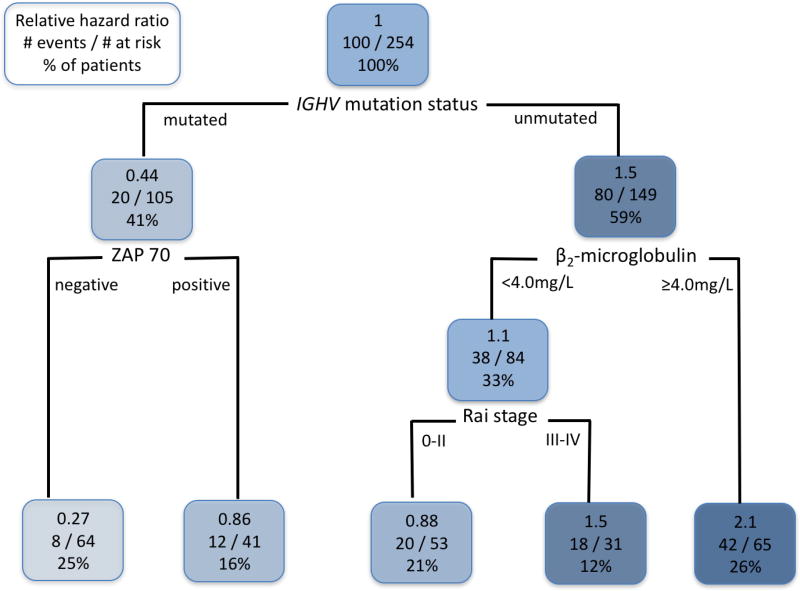Figure 1.
Classification and Regression Tree model of association between pre-treatment characteristics and progression-free survival (PFS). The following variables were included in the model: Age ≥65 vs. <65, Rai stage III–IV vs. 0–II, B2M ≥4.0mg/L vs. <4.0mg/L, ZAP70-positive vs. negative, FISH hierarchy [del(17p) vs. other], unmutated IGHV vs. mutated IGHV. For the purposes of this analysis, patients with missing IGHV-mutation status values were excluded. Thus, a total of 254 patients were analyzed. Each node is organized as follows: the top line shows the hazard ratio for PFS, relative to all patients within the cohort; the middle line shows the number of patients in each group who had an event/number at risk; the bottom line shows the percentage of the total patients who fall within that node. This classification demonstrates that patients with mutated IGHV can be subdivided according to whether they are ZAP70-negative or positive; patients with mutated-IGHV who are also ZAP70-negative have the most favorable outcome. For patients with unmutated IGHV, those with a B2M ≥4.0 had an inferior outcome to those with B2M <4.0; there was no difference in outcome according to ZAP70. Abbreviations: IGHV, immunoglobulin heavy chain variable gene; ZAP70, zeta-associated protein-70, by immunohistochemistry in BM.

